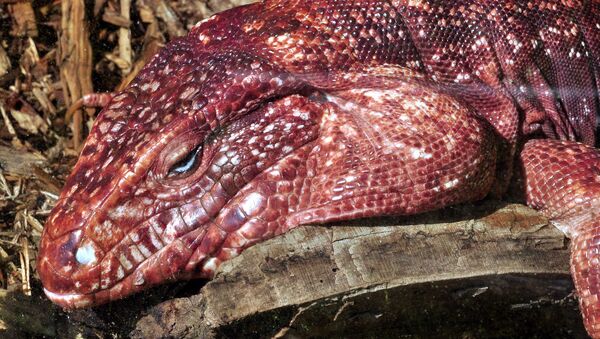According to the study, Tegu lizards are indigenous to South America, east of the Andes, and can grow to 4 feet in length. They have been brought to the US as pets but are popping up in the wild more often as more pet lizards escape or are freed by their owners.
— Adam Becker (@FreelanceAstro) October 15, 2017
A growing tegu population is a threat to native Florida wildlife such as crocodiles, sea turtles, ground-nesting birds and small mammals because they dig into alligator and turtle nests and eat their eggs. They can also be very aggressive, attacking dogs and other animals.
— KirkleyHallZoo (@KirkleyHallZoo) August 6, 2018
Three species of the reptile, Salvator merianae (the Argentine black and white tegu), Tupinambis teguixin sensu lato (the gold tegu) and S. rufescens (the red tegu), all now exist in Florida in the wild, according to the study, and their populations are likely to grow.
The researchers used species distribution models based on native data to develop projections for potential tegu distributions in North America. The results revealed that the majority of the southern US and northern Mexico are appropriate habitats for one or more of the tegu species.
"We propose that Florida is not the only state where these taxa could become established, and that early detection and rapid response programs targeting tegu lizards in potentially suitable habitat elsewhere in North America could help prevent establishment and abate negative impacts on native ecosystems," the study's abstract noted.
Texas A&M University professor Lee Fitzgerald, a co-author of the study, told Reuters last week that the reptiles are "voracious, omnivorous predatory lizards that can live in a variety of habitats, but we can't know what is going to happen or how intense this invasion is going to become until the effects are upon us."
According to the Everglades Cooperative Invasive Species Management Area, Argentine black and white tegus are already breeding in parts of Miami-Dade and Hillsborough counties in Florida.
— Wilmington, MA ACO (@wilmingtonaco) August 1, 2018
"The large South Florida population is centered in Florida City and is spreading to new areas. There is also a small breeding population of gold tegus in Miami-Dade County. Red tegus have been seen in Florida but are not known to be breeding," the organization added. (The organization asks those who see a tegu lizard to take a photo of it, note its location and report the sighting by calling 1-888-IVE-GOT1.)
Similarly, Burmese pythons, which were first brought to the Florida Everglades as pets, are now loose in the wild, and posing a dire ecological threat.
Some figures suggest there are anywhere between 30,000 and 100,000 Burmese pythons in the Florida Everglades, Sputnik reported last year. Other than unbalancing the tropical forests' ecosystem by feeding on mammals, the extremely large snakes also pose a threat to the local populations of nearby states. In 2016, snake catchers from all over the world participated in the "Florida Python Challenge" and managed to eliminate only 106 pythons.


